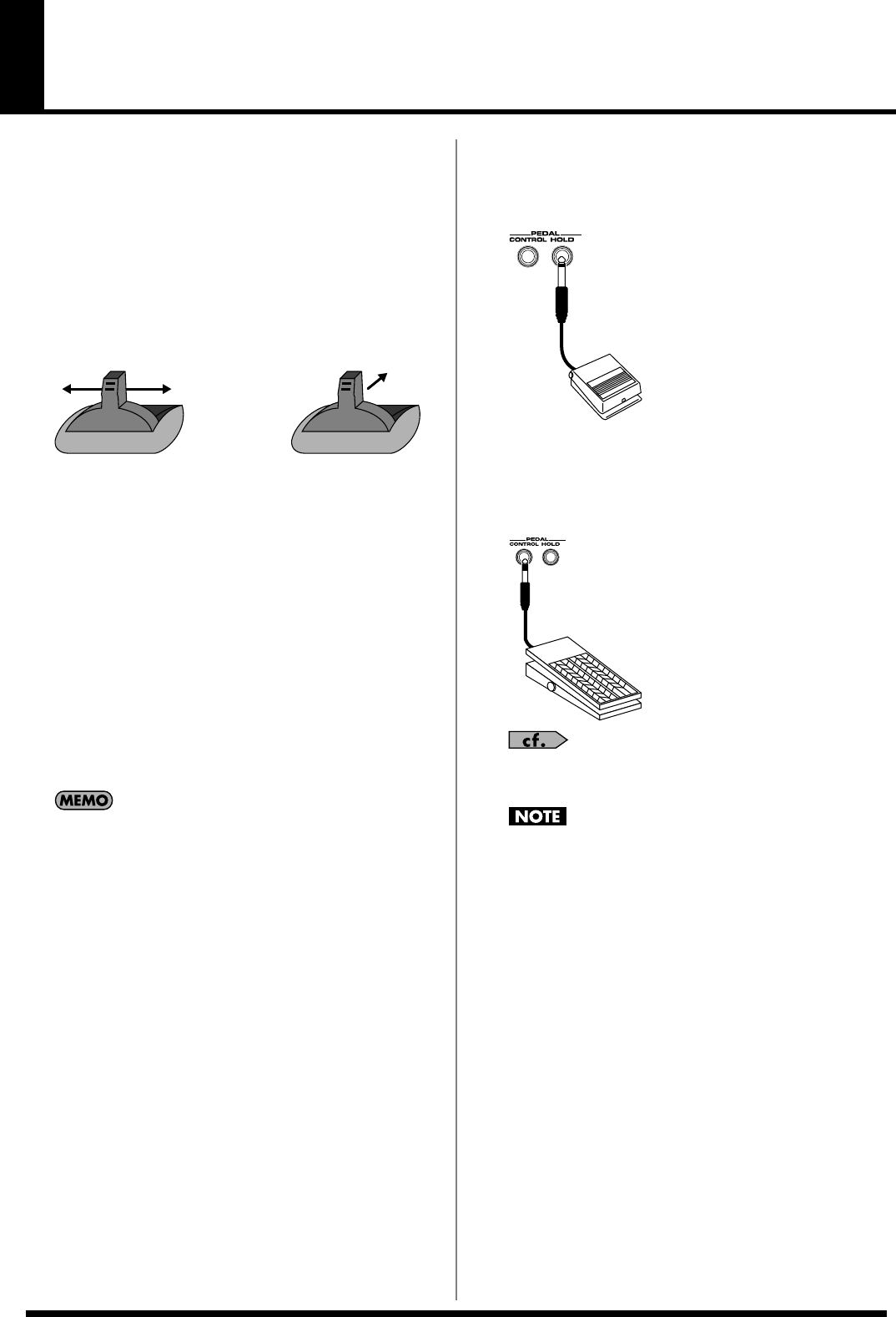
16
Various Performance Features
Velocity
The velocity—the force with which you play the keyboard—can
affect the volume or timbre of a sound.
Pitch Bend/Modulation Lever
While playing the keyboard, move the lever to the left to lower the
pitch of the currently selected patch, or to the right to raise its pitch
(
pitch bend
). You can also apply vibrato by gently pushing the lever
away from you (
modulation
).
If you push the lever away from you and at the same time move it to
the right or left, you can apply both effects at once.
fig.Bender.e
Octave Shift
You can shift the pitch of the keyboard in one-octave units over a
range of +/-3 octaves.
• In the MODE section, use OCTAVE [DOWN] [UP] to adjust the
octave shift.
• To return to the original pitch, press both buttons simultaneously.
Transpose
You can transpose the pitch of the keyboard in semitone steps, over a
range of G–F# (-5– +6 semitones).
• Hold down MODE [TRANSPOSE] and use [-] [+] to change the
transposition.
• To return to the original pitch, hold down [TRANSPOSE] and
press both buttons simultaneously.
The Octave Shift and Transpose settings are remembered even
if you change patches or performances.
Hold Pedal
If an optional pedal switch (DP series) is connected to the rear panel
PEDAL HOLD jack, you can press the pedal to cause notes to sustain
or “hold” even after their keys have been released.
fig.HolPdl
Control Pedal
If an optional expression pedal or pedal switch (EV-5, DP series) is
connected to the rear panel PEDAL CONTROL jack, you can use the
pedal to control the volume or various function.
fig.CtrlPdl
For details on pedal settings, refer to
Control Pedal Settings
(p. 72).
925
Use only the specified expression pedal or pedal switch (EV-5,
DP series; sold separately). By connecting any other expression
pedals, you risk causing malfunction and/or damage to the unit.
ModulationPitch Bend
Roland
JUNO-G_e.book 16 ページ 2006年2月13日 月曜日 午後2時44分


















